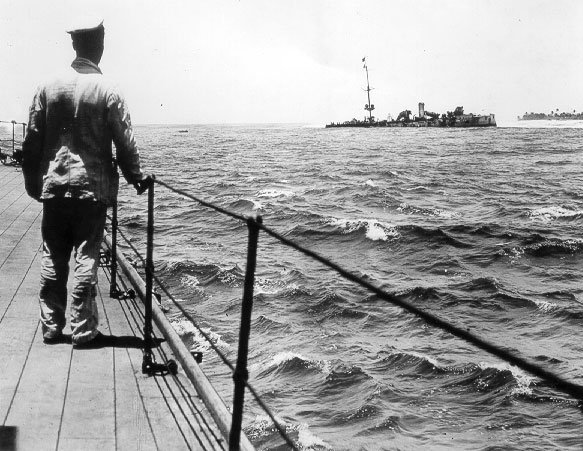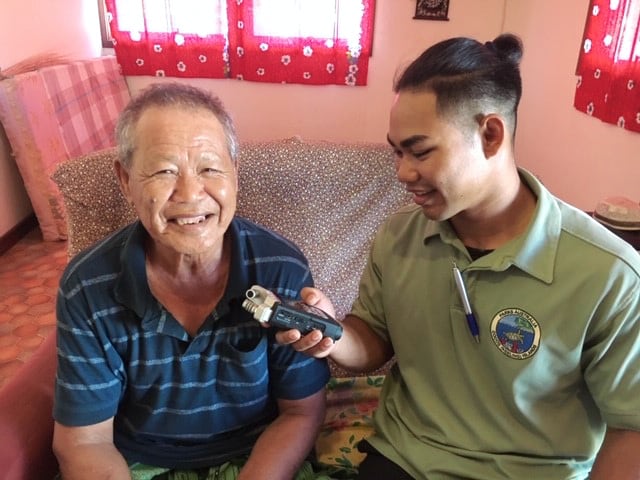History & culture
Just like the rest of the Cocos (Keeling) Islands, North Keeling Island has a fascinating history of settlement, war, and Malay immigration.
The islands’ history has created a unique culture that blends Malay and European influences.
History of the Cocos (Keeling) Islands
The first European to see the Cocos (Keeling) Islands was William Keeling, a British sea captain who spotted the archipelago on a voyage home from Java with the East India Company.
The islands weren’t inhabited until 1826, when English merchant Alexander Hare established a permanent settlement and coconut harvesting operation. Another British trader, John Clunies-Ross, arrived the following year and began his own settlement, recruiting Malays to work on his coconut plantation. The workers were paid in Cocos rupees, a currency that was only redeemable at the Clunies-Ross company’s store.
Clunies-Ross and Hare had a poor relationship, with both claiming ownership of the island group. Hare left in 1831, leaving the Clunies-Ross family as sole rulers of the islands – a position they would enjoy for the next 150 years.
Britain annexed the islands in 1857, and official responsibility was transferred to the Governor of Ceylon (now Sri Lanka) then to the Straits Settlements (now Singapore). The islands officially became part of the Straits Settlements in 1903.
In 1955, the Cocos (Keeling) Islands became an Australian territory. In 1978, the Australian Government purchased most of the land from the Clunies-Ross family. The islands’ coconut fibre industry ceased operation in 1980.
In 1984 the Cocos-Malay population voted to integrate with the Australian community thanks to a United Nations–supervised act of self-determination. The islands remain an Australian territory today.
History of North Keeling Island
 Malay graves on North Keeling Island. Photo: Rik Soderlund
Malay graves on North Keeling Island. Photo: Rik Soderlund
North Keeling Island’s distance from the main atoll, difficult landing area and absence of fresh water means that it has never been used for a permanent settlement. However, the Cocos-Malay people have a long and deep connection with the island.
Malay boats from the southern Cocos (Keeling) Islands have visited North Keeling since the early days of the archipelago’s settlement. Historically these expeditions were made to collect coconuts, timber (especially ironwood) and seabirds, particularly red-footed boobies.
In the late 19th century, the island was used to house small groups of people suffering from beriberi, a vitamin deficiency. Graves near the southern shore of the island mark the resting place of Cocos-Malays who died from this disease.
On 9 November 1914, the islands were the site of one of the first naval battles of World War I, when men from the German cruiser SMS Emden captured the communications station on Direction Island. The Australian ship HMAS Sydney intervened, killing 131 Germans and forcing the Emden onto the reefs around North Keeling Island. The Emden later sank into the waters off the southern end of the island, where it can still be dived today (a permit is required).
 The Emden aground off North Keeling Island, as seen from the deck of the HMAS Sydney
The Emden aground off North Keeling Island, as seen from the deck of the HMAS Sydney
Between the wars, groups of Cocos-Malay workers lived on North Keeling for up to two weeks at a time, staying in atap (long-houses) on the shores of the lagoon. Once or twice a week they would receive a visit from an estate vessel that delivered food and water before returning to Home Island with coconuts, birds and ironwood.
Today you can still see the remains of the workers’ long-houses, as well as the small-gauge rail system that was used to transport goods to and from the landing site.
The number of seabird-hunting trips increased after World War II, with groups of jukongs (small boats) travelling to the island whenever weather permitted. Thousands of boobies and other birds were killed by shotguns as well as traditional flails.
Better boats and weapons saw even more birds hunted in the 1970s and early 1980s before the Australian Government investigated the situation and recommended urgent controls.
In 1986 the government and the Cocos-Malay community agreed to a moratorium on seabird hunting on North Keeling Island. Red-footed boobies and most other birds on the island are now protected under the Environment Protection and Biodiversity Conservation Act 1999.
History of Pulu Keeling National Park
In 1984 the Australian Government gave most of the land in the Cocos (Keeling) Islands to the local shire council. The agreement stipulated that North Keeling Island must be managed to conserve its unique flora and fauna.
In 1990 and 1991, two House of Representative Committees recommended that the island become a national park or nature reserve. In January 1995, the Cocos (Keeling) Shire Council leased North Keeling Island back to the Federal Government and Pulu Keeling National Park was proclaimed on 12 December 1995.
In 1996, the entire park was listed as a Wetland of International Importance under the Ramsar Convention.
Parks Australia now manages the national park on behalf of the Shire Council and the Cocos-Malay population.
Cocos culture today
 Pulu-Keeling National Park staff member Siddiq Juljali conducting an oral history interview with Wak Udin
Pulu-Keeling National Park staff member Siddiq Juljali conducting an oral history interview with Wak Udin
The Cocos (Keeling) Islands still have a vibrant mix of Malay and Australian culture.
More than 450 Cocos-Malay people live in the kampong (settlement) on Home Island in the southern atoll. They are predominantly descended from the workers brought to the Cocos (Keeling) Islands to work in coconut plantations established by the Clunies-Ross family in the 1830s.
The Cocos-Malays have their own dialect and a unique culture based around their strong Muslim beliefs. They hold colourful celebrations for events such as weddings and Hari Raya, the feast day that marks the end of Ramadan.
About 140 people – mostly government employees, contractors and their families – live on West Island in the southern atoll.
